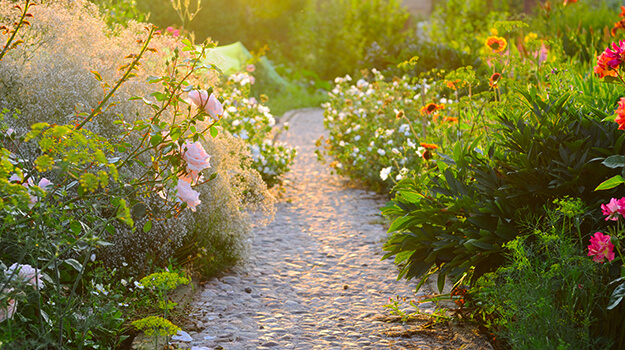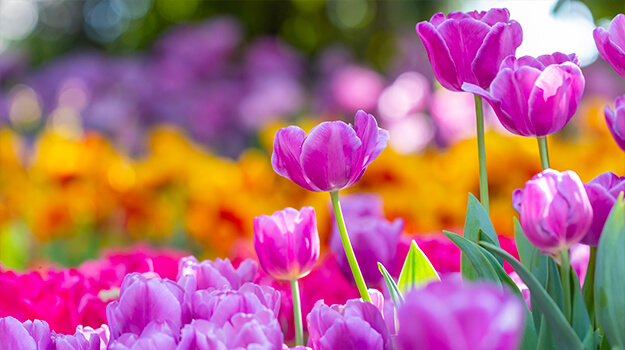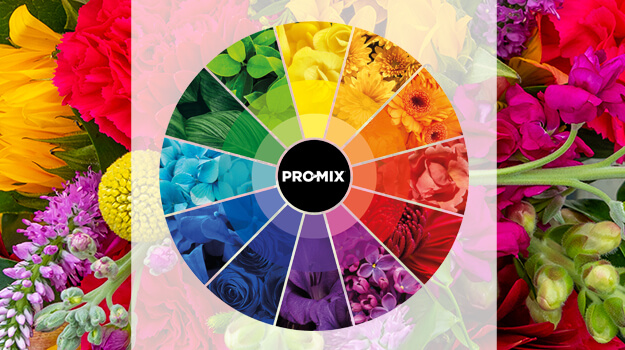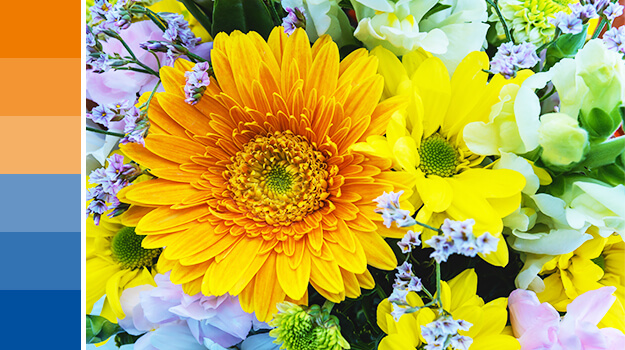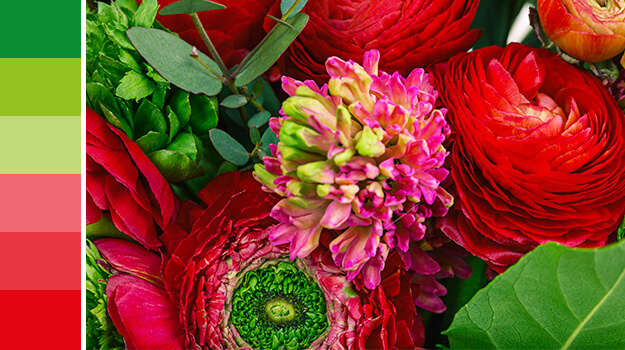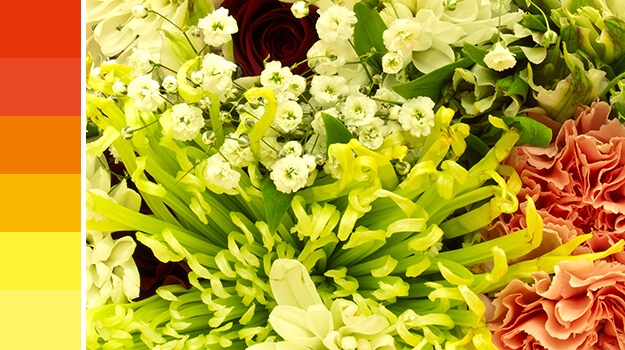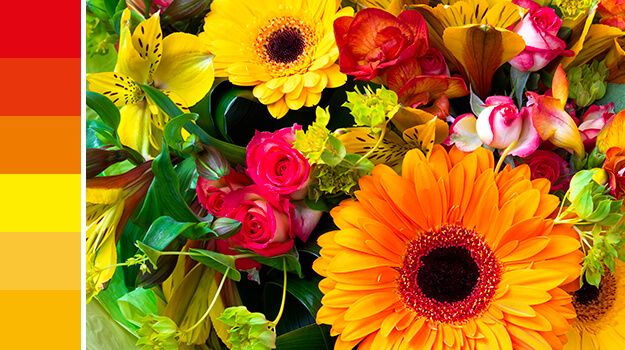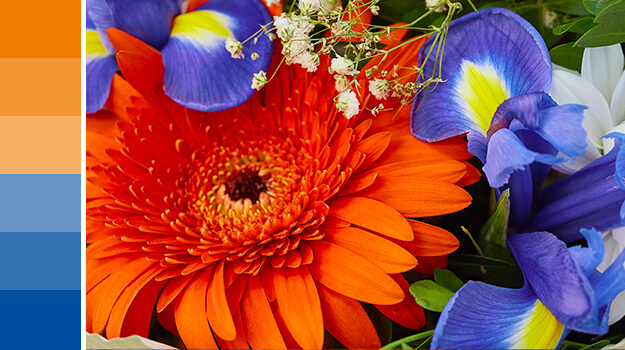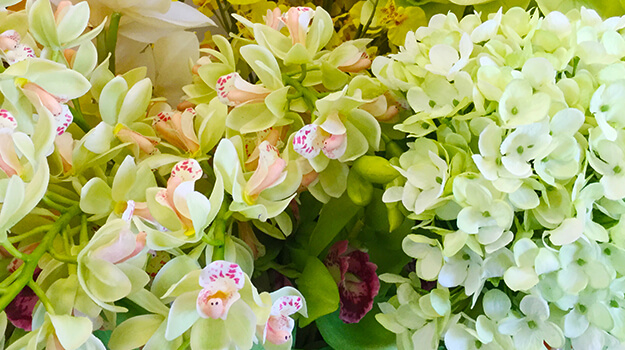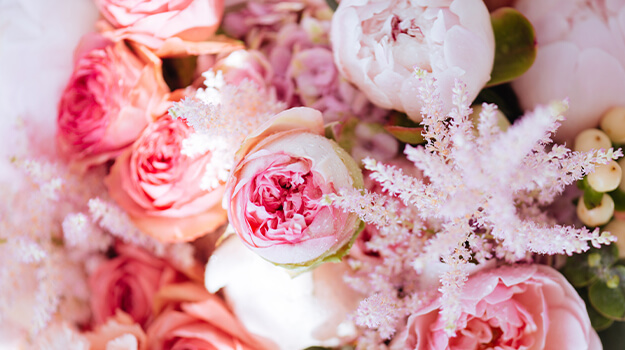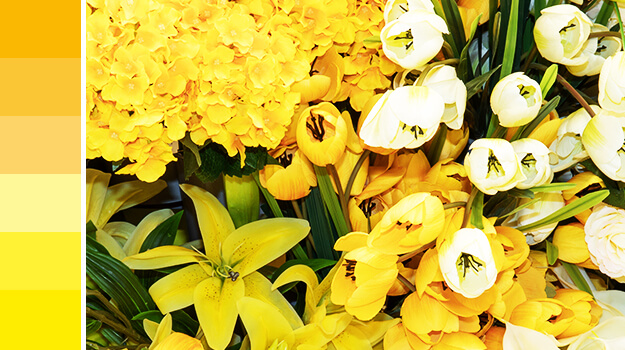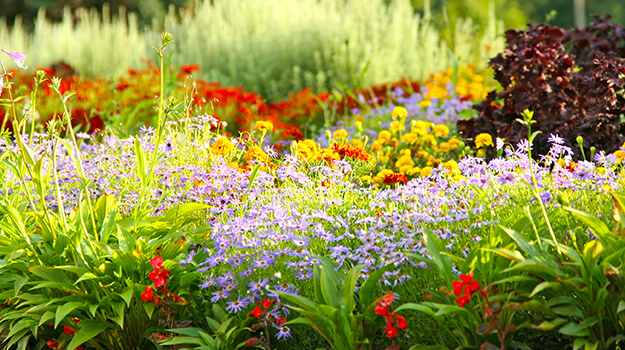- How do we perceive colour?
- How colours interact with each other
- What colours for my planters and flower beds
- Warm colours and cool colours: how to use them
- How to use complementary colours
- How to create monochrome layouts
- Shades of one colour for winning combinations
- Multicoloured garden: how to make it a success
Playing with colour in the garden allows you to create splendid displays, even in the smallest gardens. Although the exercise may seem simple at first glance, you should know that some combinations are more winning than others.
Contrasts, shades, monochrome… It’s all a question of perception… and taste! Let’s explain how to combine colours in the garden for outstanding results every time.
How do we perceive colour?
The amount of sunlight projected on a colour modifies its intensity and its final representation. As a result, the same colour will be distinguished differently in the sun as in the shade.
So, bright reds and blues will be saturated in the sun but will reveal their true colour in shade or partial shade. Mauve illustrates well how colour differs under the effect of lighting: the same mauve flowers may appear pink in the sun and bluish in the shade.
The perception of the colour of a flower will also vary depending on the season. In spring and fall, the still low sun tempers the intensity of the yellows, which will be seen as softer in spring and will take on a golden glow in the fall. On the other hand, in mid-summer, a large flower bed composed solely of yellow flowers will more often be harsh to the eye.
The time of day will also have an impact. In the morning, when the sun is out, the colours in the garden are electrifying, the contrasts starker. After 4 p.m., the same shades will appear delicately veiled and harmonized.
How colours interact with each other
The perception of colours also depends on those around it. This assimilation phenomenon, called chromatic induction, means that red flowers will appear more orange when surrounded by yellow flowers than when they are surrounded by blue ones.
Warm colours, such as yellow, red and orange, are also more eye-catching. Placed in a bed similarly as cold-coloured flowers, warm-coloured ones will appear closer together.
Cool colours, like blue and purple, will add depth. By moving the gaze away, they intensify the effect of perspective. By skillfully playing with colour temperature, it is possible to make a small garden appear larger!
What colours for my planters and flower beds
As we have just seen, colours are not always perceived in the same way. And tastes also vary from person to person. Nonetheless, there are some basics that can help you choose winning harmonies. In this regard, the colour wheel can be a practical tool:
- The colour wheel is made up of three primary colours: blue, red and yellow
- Three secondary colours formed from the mixture of two primary colours: orange, green and purple
- Six tertiary colours, formed by mixing a primary colour with a secondary colour: turquoise blue (blue + green), indigo blue (blue + violet), purple (red + violet), vermilion (red + orange), tan (yellow + orange), chartreuse green (yellow + green)
Opposite colours on the colour wheel, called complementary colours, create attractive contrasts, while juxtaposed colours allow you to create perfect harmonies.
Warm colours and cool colours: how to use them
Cold colours (from green to purple) are grouped on one side of the colour wheel, and warm colours (from yellow to red) are on the other.
Cool colours: perfect for small spaces
Cool colours are associated with nature and the great outdoors. Green, purple and blue immerse you in the immensity of the sea, mountains and large meadows. Soothing and relaxing, they are also associated with calm, fullness and rejuvenation. Used in small spaces, they provide an impression of grandeur.
Cool colours go particularly well with white and silver foliage.
Warm colours: ideal for arousing emotion
Warm colours attract attention and evoke emotional reactions. In small gardens, be sure to use them sparingly as they quickly become overwhelming. You can avoid severe contrasts by staging a monochrome composed of two juxtaposed colours such as tan and orange, or red and vermilion.
Note that warm colours are highlighted by textured or variegated foliage.
How to use complementary colours
Contrasts energize colours. Played with force, they can give rise to spectacular arrangements. By choosing complementary colours (placed directly opposite each other on the colour wheel), you create breathtaking compositions and avoid association errors.
Pair purple with yellow, orange with blue, or red with green. Played as a duo, complementary colours are equally emphasized.
You can reduce the effect by adding foliage or flowers of a colour contrasted with one or the other of the featured colours (for example: yellow, mauve and violet).
PRO TIP: Avoid mixing several contrasting colours in the same area. In the same flower bed, it is preferable to limit yourself to two complementary colours.
How to create monochrome layouts
Monochrome planters are very trendy. The famous white gardens, where white flowers rub shoulders with silver foliage, are perfect examples. Want to create it at home? Pay attention to the subtleties of the nuances... Pure white does not go well with cream and ivory. Placed side by side, pure white flowers will look vibrant, while cream-coloured ones will appear wilted.
To create a monochrome flower bed or planter, you can choose a colour in at least two shades. For example, a monochrome pink arrangement will feature gradations ranging from dark pink to light pink.
In a monochrome flower bed, resist the urge to add another colour, except that of the foliage. In a tone-on-tone planter, you will avoid breaking the effect by using a pot in a neutral shade or a container lightly tinted in the chosen tone.
PRO TIP: Be wary of monochromes featuring red. The red colour can quickly become garish. You can get away with adding purple foliage, which rebalances everything and adds depth to the composition.
Shades of one colour for winning combinations
A monochrome is made up of neighbouring colours on the colour wheel, such as green and blue, red and orange, violet and purple. Playing them as a duo or trio with juxtaposed colours creates a beautiful unity. The result is always harmonious.
You can also generate a monochrome by adding white to the chosen colour.
Some nice suggestions:
- Blue, purple and pink (blue fescue grass, lavender, allium, peony Vivid Rose)
- Peach, apricot and copper (heuchera Caramel, dahlia Apricot Perception, dahlia Cornel Bronze)
- Fuchsia, medium pink, pale pink and white (speedwell Red Fox, rose John Davis Explorer, sidalcea Party Girl, gypsophila)
Multicoloured garden: how to make it a success
Nothing obliges you to refer to the colour wheel to design your flower beds and your potted arrangements. After all, nothing is as satisfying as a garden that looks like us.
Multicoloured gardens produce that impression of profusion and exuberance so sought-after in landscaping. Here are some recommendations to avoid disharmony, without hindering the artist in you.
When there are too many colours, the eye gets lost and sees a disordered arrangement. While a limited number of colours ensures unity, a well-made arrangement allows a beautiful variety of shades to blend together.
Mixing colours in the garden means using four or more colours. You can avoid overly drastic contrasts by playing with gradations. The addition of white flowers and foliage in shades of green, silver or bronze ensures a harmonious transition between colours.
PRO TIP: Red should never be the dominant colour in a multicoloured flower bed. Bright yellow should also be used in moderation, but only in the sun. No need to restrict yourself when it comes to illuminating a shaded or semi-shaded area.


